How Can Chiropractors Get Found on AI Search Tools Like ChatGPT, Claude, and Perplexity?
How Can Chiropractors Get Found on AI Search Tools Like ChatGPT, Claude, and Perplexity?
The way people find chiropractors is changing fast. Google just released a major AI update. The SEO game has changed. Google just wiped the online search plate clean.
Plus AI platforms like Chat GPT and Perplexity have joined the search arms race. They're major players in the game now.
If you make some minor tweaks now, you'll ride the AI search whirlwind and quickly outpace everyone else.
Instead of typing "chiropractor near me" into Google and scrolling through ten blue links, patients are now asking ChatGPT, Claude, and Perplexity questions like "Who's a good chiropractor for lower back pain in Seattle?"
These AI tools give direct answers with specific recommendations—and if your practice isn't optimized for them, you're invisible.
This guide shows you exactly how to make sure AI search tools recommend your chiropractic practice when potential patients ask for help.
You'll learn practical steps to optimize your online presence, build authority, and attract more local clients through AI-assisted search.
What's Changing in How Patients Find Chiropractors
Search is going through its biggest shift in 25 years. Traditional Google searches are declining as more people turn to AI chatbots for answers. Here's what's happening:
Conversational questions are replacing keywords: People don't type "chiropractor Brooklyn" anymore. They ask, "What kind of chiropractor should I see for my sciatica?" or "Is it worth seeing a chiropractor for neck pain?" These longer, more natural questions need a different optimization approach.
AI tools cite sources differently: Unlike Google, which ranks pages based on hundreds of factors, AI search tools pull information from sources they trust and cite them in their answers. Getting cited means your practice appears in the AI's response—which is the new first page of search results
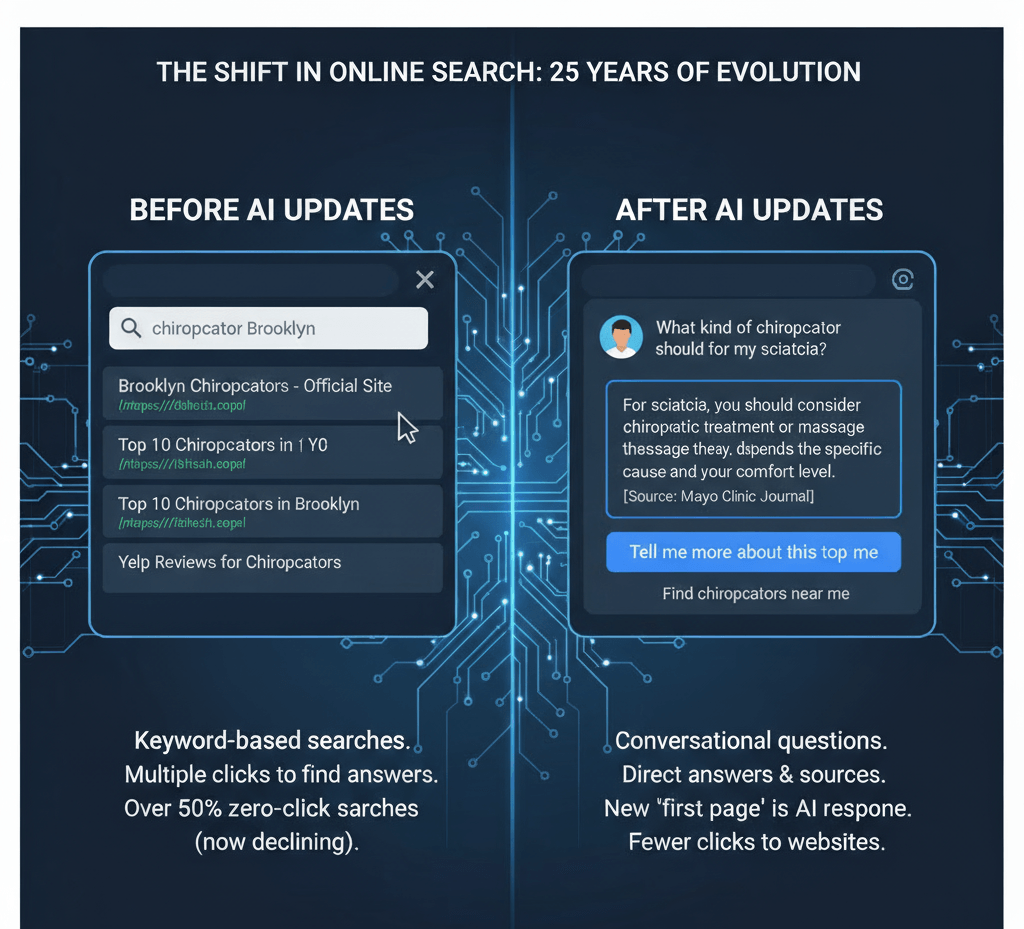
Download your free step-by-step checklist and make your practice impossible to miss online. Click Here.
Why This Matters for Your Chiropractic Practice
If you think this is just tech hype, consider this: your future patients are already using AI search. They're asking these tools about symptoms, treatment options, and provider recommendations before they ever call your office.
The patient journey has changed: Someone with chronic back pain used to Google "chiropractor," see some listings, and maybe click three websites. Now they ask Claude, "Should I see a chiropractor or physical therapist for herniated disc pain?" The AI gives them a detailed answer and might mention specific practices that have strong online content about disc issues.
Trust is being established before contact: By the time a patient calls you, they've already formed opinions based on what AI tools told them. If your practice was mentioned positively—or better yet, if your own content was cited—you're starting with trust already built.
Local competition is becoming increasingly savvy: Some chiropractors are already optimizing their websites for AI search. They're getting recommended while others are being left out of the conversation entirely. The practices that adapt now will have a significant advantage.
How AI Search Tools Decide Which Chiropractors to Recommend
Understanding how these tools work helps you optimize for them. AI search tools like ChatGPT, Claude, and Perplexity don't have a secret database of preferred businesses. They gather information through several methods:
Web crawling and indexing: These tools access publicly available web content, just like Google does. They read your website, blog posts, directory listings, and review sites. The difference is how they use that information—they synthesize it into conversational answers rather than showing links.
Citations and sources: When AI tools recommend businesses, they prefer sources they consider reliable. This includes established directories like Healthgrades, Google Business Profile, medical review sites, and well-maintained professional websites. If your practice has consistent, quality information across these platforms, you're more likely to be cited.
Real-time search capabilities: Tools like Perplexity search the web in real-time when answering questions. They look for recent, relevant content. This means fresh blog posts, updated service pages, and current reviews all matter.
Quality signals: AI tools evaluate content quality using similar factors to search engines—expertise, authority, clear writing, and trustworthiness. A well-written blog post about treating sports injuries signals more authority than a thin page

How to Optimize Your Chiropractic Practice for AI Search
Getting found by AI search tools requires a different approach than traditional SEO. Here's what works:
Create Content That Answers Real Patient Questions:
AI tools love content that directly answers questions. Instead of writing generic service pages, create content around what patients actually want to know.
Think about patient questions: What do people ask during their first phone call? Questions like "Do I need a referral to see a chiropractor?" or "How many sessions will I need for lower back pain?" Turn each question into a blog post or FAQ answer.
Use natural language: Write the way people talk. Instead of "We provide spinal manipulation services," say "We help relieve back pain through gentle spinal adjustments." AI tools pick up on conversational language because that's how people ask questions.
Go deep on topics: A 300-word blog post about neck pain won't cut it. Write 1,500+ words that cover symptoms, causes, treatment options, what to expect, and when to seek care. Detailed content gets cited more often.
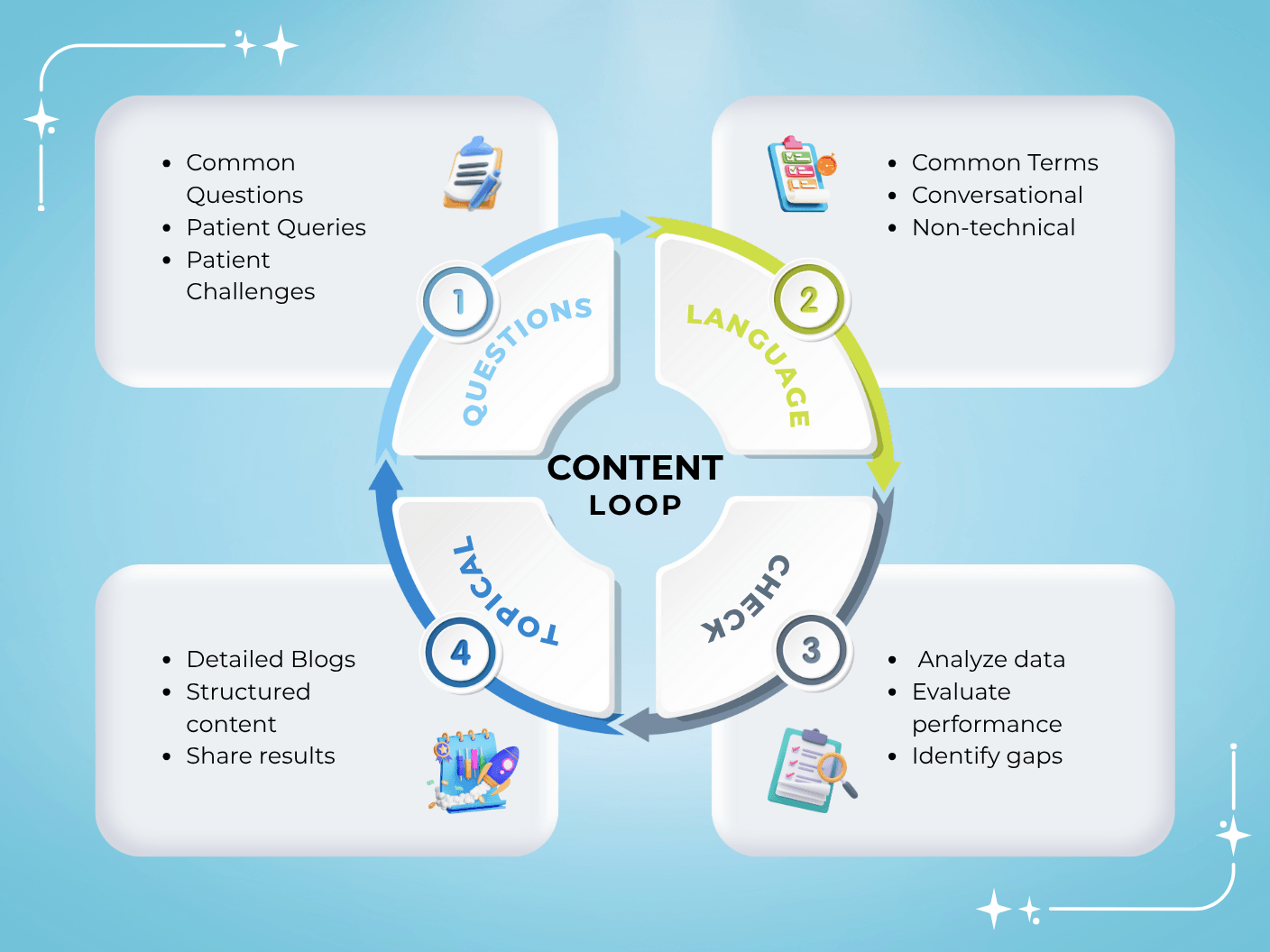
Build Expertise, Experience, Authority, and Trust (E-E-A-T)
Google's quality guidelines emphasize E-E-A-T, and AI tools follow similar principles. Here's how to strengthen these signals:
Show your expertise: List your credentials, certifications, and specialized training. Create an "About" page that explains your education, years of practice, and treatment philosophy. AI tools look for these credentials when evaluating healthcare providers.
Demonstrate experience: Share case studies (with patient permission and proper privacy protections). Write blog posts about specific conditions you've successfully treated. The more you can show you've actually helped real patients, the better.
Build authority: Get mentioned on other reputable websites. This includes local news sites, health blogs, and professional directories. Write guest posts for local wellness sites. Authority comes from others recognizing your expertise.
Earn trust: Display patient reviews prominently. Keep your website professional and up-to-date. Include clear contact information, office photos, and team bios. Trust signals tell AI tools your practice is legitimate and established.
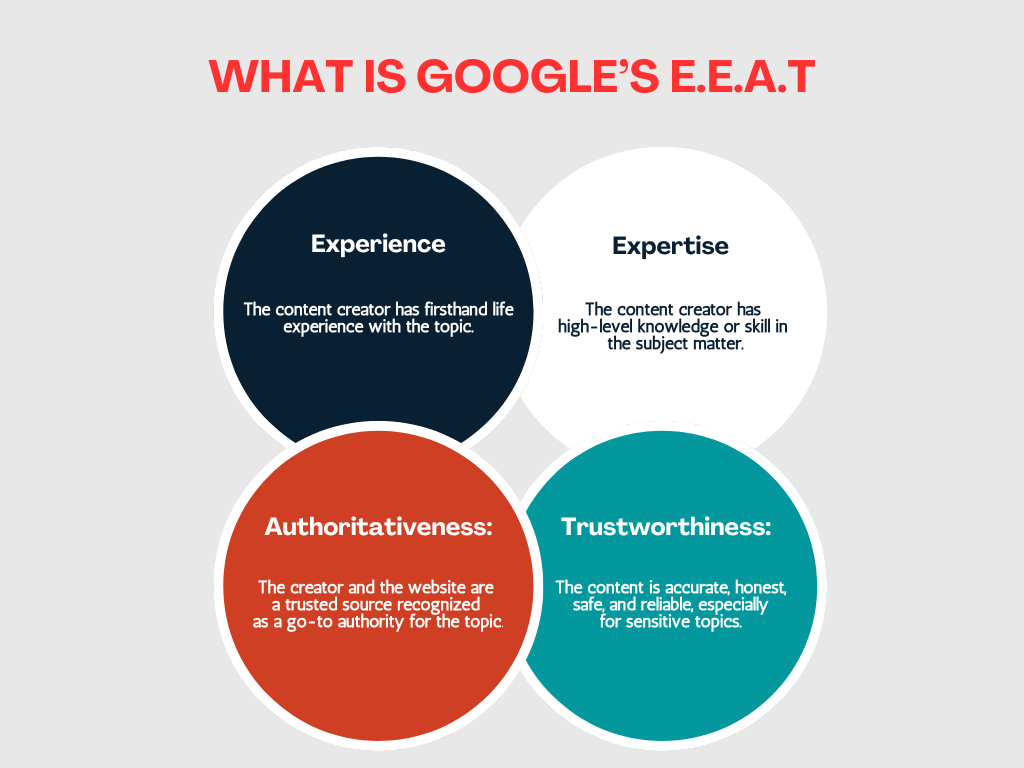
Use Structured Data to Help AI Tools Understand Your Practice
Structured data is code that tells search engines and AI tools exactly what your content means. It's like adding labels to everything on your website.
Implement local business schema: This structured data format includes your practice name, address, phone number, hours, services, and accepted insurance. It makes it crystal clear what your business is and what you offer.
Add medical schema for conditions: When you write about treating specific conditions, use schema markup to identify them. This helps AI tools understand that your sciatica blog post is about a specific medical condition, not just a random article.
Mark up your reviews: Review schema lets AI tools easily identify and understand your patient testimonials. This makes it more likely your high ratings will be cited when someone asks for chiropractor recommendations.
Include FAQ schema: If you have frequently asked questions on your site, mark them up with FAQ schema. This makes it easy for AI tools to pull your answers when someone asks similar questions.
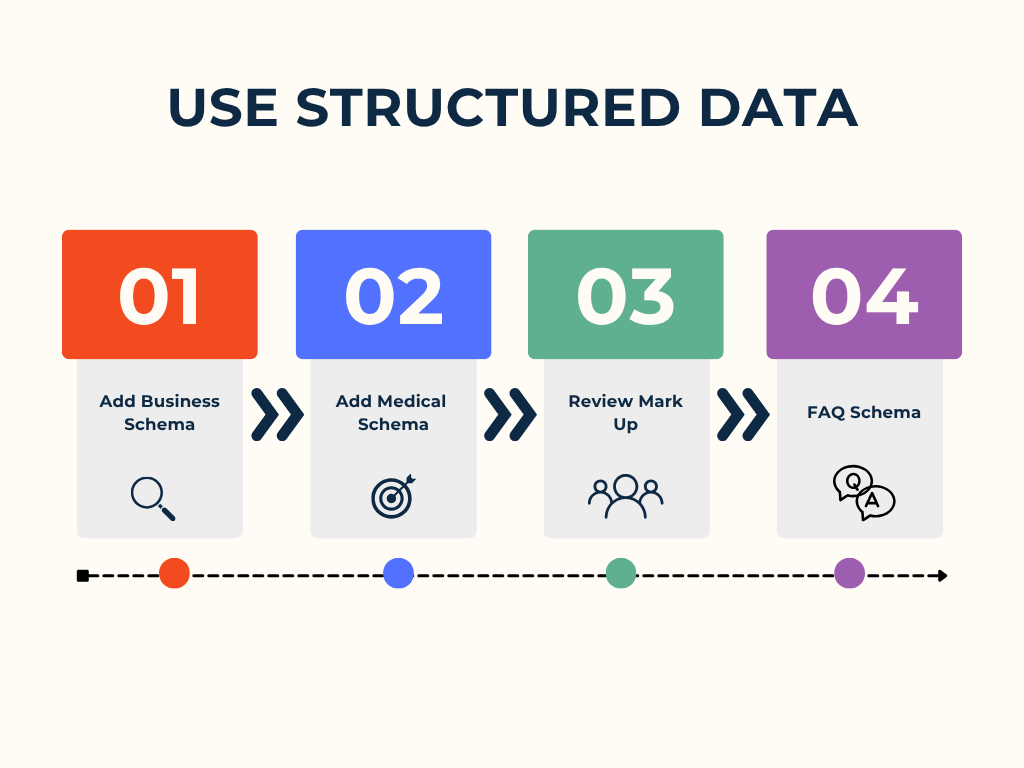
Build Topical Authority Through Content Clusters
Instead of writing random blog posts, organize your content around main topics. This approach, called content clustering, helps AI tools see you as an expert in specific areas.
Choose your pillar topics: Pick 3-5 main topics your practice specializes in. Examples: sports injuries, pregnancy chiropractic care, auto accident recovery, chronic pain management, pediatric chiropractic.
Create pillar pages: For each topic, write a detailed guide (1,500-3,000 words) that covers all the basics. This becomes your pillar content.
Add cluster content: Write supporting blog posts that go deeper into specific aspects of each pillar topic. For a sports injuries pillar, you might write cluster posts about runner's knee, tennis elbow, shoulder impingement, and prevention strategies.
Link them together: Connect your pillar pages to cluster posts and vice versa. This internal linking structure helps AI tools understand the relationship between your content and see you as an authority on those topics.
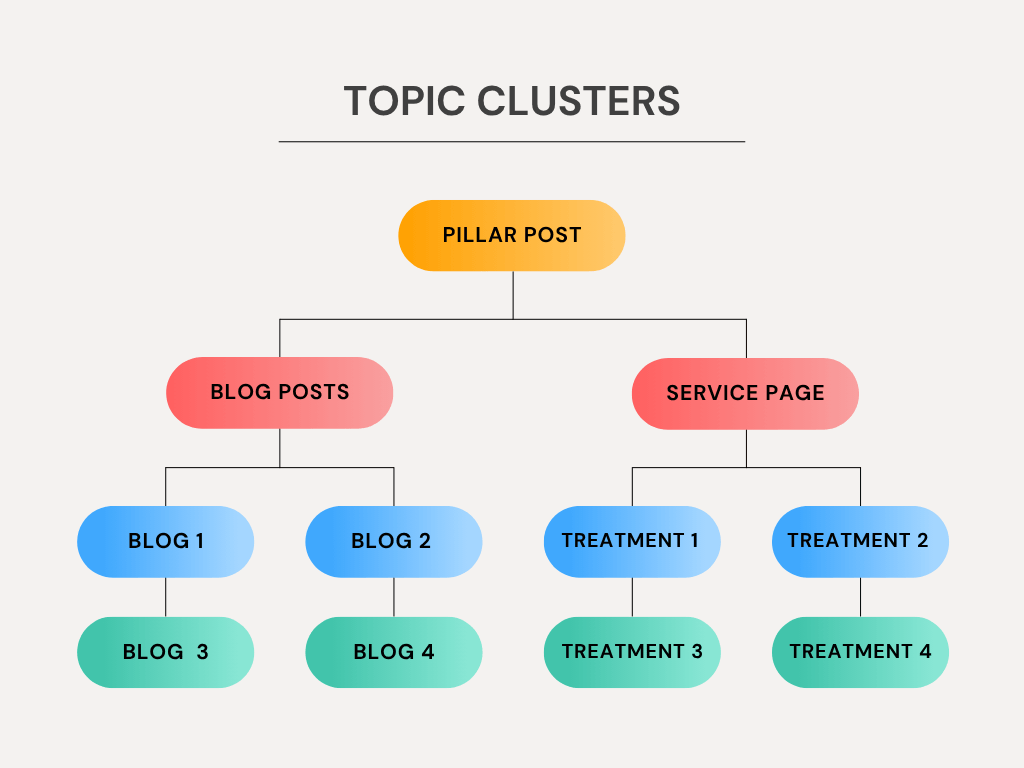
Local SEO: Making Sure AI Tools Recommend Your Practice for Local Searches
Most chiropractic searches have local intent. Someone in Austin, Texas, doesn't want recommendations for a chiropractor in Portland, Oregon. Here's how to optimize for local AI search:
Get Your NAP Information Consistent Everywhere
NAP stands for Name, Address, Phone number. AI tools pull information from multiple sources, and inconsistencies confuse them.
Audit your listings: Search for your practice name and make a list of every directory, review site, and platform where you appear. Check that your NAP is identical everywhere—same format, same suite number, same phone number.
Fix inconsistencies: If you find variations (like "Street" vs "St" or an old phone number), update them. Even small differences can make AI tools unsure if they're looking at the same business.
Claim unclaimed listings: You might appear on directories you didn't know about. Claim those listings so you can control the information and keep it accurate.
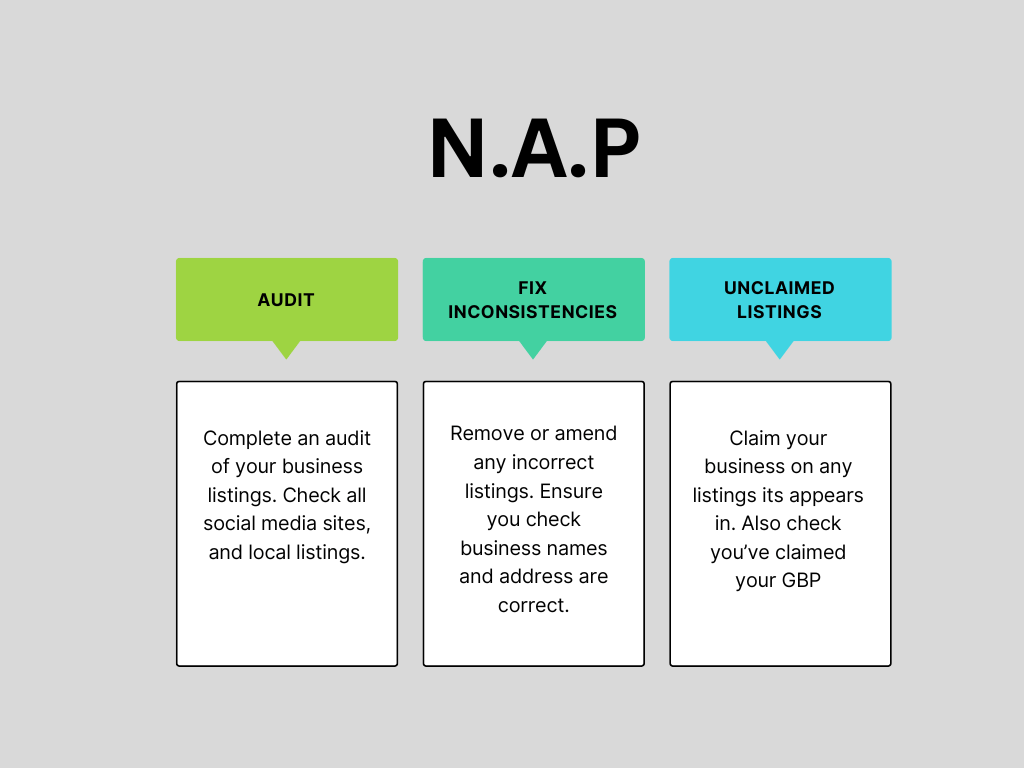
Optimize Your Google Business Profile
Your Google Business Profile is one of the most important local SEO factors, and AI tools often pull from it.
Complete every section: Don't leave anything blank. Add your services, attributes (like "wheelchair accessible"), business description, photos, and hours including holiday hours.
Choose the right categories: Select "Chiropractor" as your primary category, then add relevant secondary categories like "Sports Medicine Clinic" or "Pain Management Physician" if applicable.
Post regular updates: Share updates, offers, and blog posts through Google Posts. Active profiles signal that your business is current and engaged.
Respond to all reviews: Reply to both positive and negative reviews professionally. Response rate affects how trustworthy you appear to both Google and AI tools.
Create Location-Specific Service Pages
If you serve multiple neighborhoods or cities, create dedicated pages for each area.
Write unique content: Don't just copy the same text and swap city names. Write genuinely unique content about serving each area. Mention local landmarks, neighborhood characteristics, or common conditions you see in that area.
Include local keywords naturally: Phrases like "chiropractor in Downtown Denver" or "back pain treatment in Boulder" should appear naturally in your content, not stuffed awkwardly.
Add local schema markup: Use schema to identify the specific areas you serve. This helps AI tools match you with local searches.
Collect and Showcase Patient Reviews
Reviews are social proof that AI tools consider when making recommendations.
Ask for reviews consistently: After successful treatment, ask satisfied patients to leave reviews on Google, Yelp, Healthgrades, and Facebook. Make it easy by sending direct links.
Respond to reviews: Thank patients for positive reviews and address negative ones professionally. This shows you're engaged and care about patient experience.
Display reviews on your website: Don't just collect reviews on third-party sites—showcase them on your own website too. Include a mix of full testimonials and shorter quotes.
Use Local Link Building
Getting links from other local websites boosts your local authority.
Partner with local businesses: Connect with gyms, yoga studios, massage therapists, and sports teams. Offer to write guest blog posts or exchange links.
Get involved in community events: Sponsor local sports teams, participate in health fairs, or offer free workshops. These activities often result in local news coverage and website mentions.
Join local business associations: Chamber of commerce memberships and professional associations usually include a directory listing with a link to your website.
Tools and Resources to Help You Optimize for AI Search
Recommended Tools:
Google Search Console: Free tool to monitor how your site performs in Google search and identify issues
Schema.org Markup Generator: Create structured data code without technical knowledge
BrightLocal or Moz Local: Tools to manage local listings and track NAP consistency
Answer the Public: Find real questions people ask about chiropractic topics
Google Business Profile Manager: Optimize and update your local business listing
Content Calendar Approach
Plan to publish one substantial blog post every week or two. Focus on questions your patients actually ask. Mix educational content (how treatments work), condition-specific content (treating specific injuries), and local content (serving your specific community).
12-Month Content Calendar Example:
Here's a sample calendar mixing all three content types. Adapt this based on your specialties and what patients actually ask you.
Quarter 1: Building Foundation (Weeks 1-13)
Week 1 (Educational): "What Actually Happens During a Chiropractic Adjustment?"
Target keyword: "what happens during chiropractic adjustment"
Include: Step-by-step walkthrough, what the popping sound means, safety information
Week 3 (Condition-Specific): "How to Know If Your Lower Back Pain Is a Herniated Disc"
Target keyword: "how do I know if I have herniated disc"
Include: Symptoms checklist, when to see a doctor, treatment options
Week 5 (Local): "Best Chiropractor for Running Injuries in [Your City]"
Target keyword: "chiropractor for runners [city]"
Include: Common running injuries, prevention tips, local running trails
Week 7 (Educational): "How Many Chiropractic Sessions Will I Need?"
Target keyword: "how many chiropractic visits do I need"
Include: Factors that affect treatment length, typical timelines by condition
Week 9 (Condition-Specific): "Sciatica Treatment: What Works and What Doesn't"
Target keyword: "sciatica treatment options"
Include: Conservative treatments, when surgery is needed, expected recovery time
Week 11 (Educational): "What Should I Expect During My First Chiropractic Visit?"
Target keyword: "first time chiropractor what to expect"
Include: What to wear, medical history questions, examination process
Week 13 (Condition-Specific): "Can a Chiropractor Help With Migraines and Tension Headaches?"
Target keyword: "chiropractor for migraines"
Include: Types of headaches, cervicogenic headaches, treatment success rates
Quarter 2: Building Topical Authority (Weeks 14-26)
Week 15 (Local): "Finding Emergency Chiropractic Care in [Your Area] After an Accident"
Target keyword: "emergency chiropractor [city]"
Include: When to seek immediate care, local urgent care options, insurance coverage
Week 17 (Condition-Specific): "Treating Whiplash After a Car Accident"
Target keyword: "whiplash treatment after car accident"
Include: Timeline of symptoms, documentation for insurance, recovery expectations
Week 19 (Educational): "Why Do Chiropractors Take X-Rays Before Treatment?"
Target keyword: "why do chiropractors take x-rays"
Include: What x-rays reveal, safety concerns, when they're necessary
Week 21 (Condition-Specific): "Text Neck: How Your Phone Is Causing Chronic Neck Pain"
Target keyword: "neck pain from phone use"
Include: Posture correction, exercises, ergonomic tips
Week 23 (Local): "How [Your City] Office Workers Can Prevent Desk-Related Back Pain"
Target keyword: "desk job back pain [city]"
Include: Ergonomic assessments, stretches at desk, local ergonomic equipment stores
Week 25 (Educational): "What's the Difference Between Manual Adjustments and Instrument-Assisted Techniques?"
Target keyword: "types of chiropractic adjustments"
Include: Activator method, Gonstead technique, which is right for different patients
Quarter 3: Specialization Content (Weeks 27-39)
Week 27 (Condition-Specific): "Hip Pain When Walking: Is It Your SI Joint or Something Else?"
Target keyword: "hip pain when walking causes"
Include: SI joint dysfunction, hip labral tears, referred pain from spine
Week 29 (Local): "Treating Sports Injuries for [Local High School] Athletes"
Target keyword: "sports chiropractor [city]"
Include: Common teen sports injuries, working with coaches, performance optimization
Week 31 (Educational): "How Soft Tissue Therapy Complements Chiropractic Adjustments"
Target keyword: "soft tissue therapy chiropractic"
Include: Myofascial release, instrument-assisted soft tissue mobilization, benefits
Week 33 (Condition-Specific): "Why Your Knee Pain Might Actually Be a Hip Problem"
Target keyword: "knee pain from hip problems"
Include: Referred pain patterns, gait analysis, treatment approach
Week 35 (Educational): "Do Chiropractic Adjustments Actually Realign Your Spine?"
Target keyword: "do chiropractors realign spine"
Include: What research shows, proper terminology, realistic expectations
Week 37 (Condition-Specific): "Plantar Fasciitis Treatment: Beyond Just Stretching"
Target keyword: "plantar fasciitis treatment chiropractor"
Include: Foot adjustments, gait analysis, orthotics, exercises
Week 39 (Local): "Where to Find Pregnancy Chiropractic Care in [Your City]"
Target keyword: "pregnancy chiropractor [city]"
Include: Webster technique, safe trimester-specific treatments, local prenatal resources
Quarter 4: Seasonal and Specialized Topics (Weeks 40-52)
Week 41 (Condition-Specific): "TMJ Disorder: How Chiropractic Care Can Help Jaw Pain"
Target keyword: "chiropractor for TMJ"
Include: Jaw adjustments, related neck issues, working with dentists
Week 43 (Local): "Winter Activities in [Your Area] and How to Avoid Injury"
Target keyword: "winter injury prevention [city]"
Include: Skiing, ice skating, shoveling safety, local emergency contacts
Week 45 (Educational): "How Does Spinal Decompression Relieve Herniated Disc Pain?"
Target keyword: "spinal decompression therapy"
Include: How the table works, who's a candidate, what research shows
Week 47 (Condition-Specific): "Why Does My Shoulder Hurt When I Lift My Arm?"
Target keyword: "shoulder pain lifting arm"
Include: Rotator cuff issues, impingement, frozen shoulder, treatment timeline
Week 49 (Local): "Choosing a Pediatric Chiropractor in [Neighborhood]: Parent's Guide"
Target keyword: "pediatric chiropractor [area]"
Include: Safety considerations, common childhood conditions, what to ask
Week 51 (Educational): "[Your City] Workers Comp: What to Do After a Workplace Injury"
Target keyword: "workers comp chiropractor [city]"
Include: Filing claims, documentation needed, treatment coverage
Large Call to Action Headline
Common Questions About AI Search Optimization for Chiropractors
This isn't overnight. Plan for 3-6 months before you see significant changes. AI tools need time to crawl your updated content, and you need time to build authority through consistent publishing and link building. Some practices see AI citations within weeks if they already have strong fundamentals in place.
Not really. While Chat GPT, Claude, and Perplexity work slightly differently, the fundamentals are the same: quality content, local optimization, structured data, and authority signals. Optimizing for one helps with all of them.
Absolutely not. Traditional SEO and AI search optimization overlap significantly. Most of what helps you rank in Google also helps AI tools find and cite you. Think of AI search optimization as an extension of good SEO, not a replacement.
Lorem ipsum dolor sit amet, consectetur adipisicing elit. Autem dolore, alias, numquam enim ab voluptate id quam harum ducimus cupiditate similique quisquam et deserunt, recusandae.
You have options. Hire a healthcare content writer who understands chiropractic care. Use voice recording to answer patient questions, then have someone transcribe and edit them into blog posts. Or start small—one blog post per month is better than none.
Start with your Google Business Profile and NAP consistency. These are quick wins that immediately improve your local visibility. Then move to creating quality content around your top specialties.
Test it yourself. Ask various AI tools questions like "Who's a good chiropractor for sports injuries in [your city]?" Take note if you're mentioned. You can also track referral traffic in Google Analytics—some AI tools show up as referral sources.
Address negative reviews professionally and promptly. If there's false information on third-party sites, contact them to correct it. Focus on building positive signals—more good reviews, quality content, and professional listings—that outweigh negative mentions.



